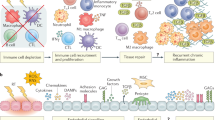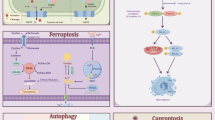Abstract
PREVIOUS investigations have established the presence of tumour-associated embryonic antigen(s) at the cell surface of virus-induced, chemically-induced and spontaneously arising tumours1–4. In vitro tests have shown that rat tumour cells, expressing the embryonic components, act as appropriate targets in cytotoxicity assays using lymph node cells from animals sensitised to embryonic tissue3,5 (L.P.S., R.C.R. and R.W.B., unpublished). In these tests lymph node cells, from either multiparous rats or rats immunised against embryonic tissue, either by inoculation of irradiated 14–15-d-old rat embryo cells or embryonic excision, were shown to be cytotoxic for a large range of experimental rat tumours. Translation of these studies to the in vivo situation has not been uniformly successful in all the tumour systems studied. Some investigators have shown that embryo immunisation can induce immunity to subcutaneous challenge with minimal doses of tumour cells6,7. Conversely other laboratories, using similar immunisation procedures and tumour models have been unable to confirm these observations (refs 8–10 and L.P.S., R.C.R. and R.W.B., unpublished). It has previously been established that intravenous inoculation of rat tumour cells leads to the development of pulmonary tumour growth11,12. Studies were therefore initiated to investigate whether or not presensitisation of rats to rat embryonic tissue could prevent the growth of tumours in the lungs. The results presented here show positive reductions in pulmonary tumours in rats sensitised to embryonic tissue compared with untreated controls.
This is a preview of subscription content, access via your institution
Access options
Subscribe to this journal
Receive 51 print issues and online access
$199.00 per year
only $3.90 per issue
Buy this article
- Purchase on SpringerLink
- Instant access to full article PDF
Prices may be subject to local taxes which are calculated during checkout
Similar content being viewed by others
References
Stonehill, E. H., and Bendich, A., Nature, 228, 370–372 (1970).
Girardi, A. J., Repucci, P., Dierlam, P., Rutala, W., and Coggin, J. H., Proc. natn. Acad. Sci. U.S.A., 70, 183–186 (1973).
Baldwin, R. W., Glaves, D., and Vose, B. M., Int. J. Cancer, 10, 233–243 (1973).
Baldwin, R. W., and Embleton, M. J., Int. J. Cancer, 13, 433–443 (1974).
Rees, R. C., Bray, J., and Baldwin, R. W., Int. J. Cancer (in the press).
Coggin, J. H., Ambrose, K. R., and Anderson, N. G., J. Immun., 105, 524–526 (1970).
Grant, J. P., and Wells, S. A., J. Surg. Res., 16, 533–540 (1974).
Baldwin, R. W., Glaves, D., and Vose, B. M., Int. J. Cancer, 13, 135–142 (1974).
Parmiani, G., and Lembo, R., Int. J. Cancer, 14, 555–564 (1974).
Ting, C. C., Rodrigues, D., and Herberman, R. B., Int. J. Cancer, 12, 519–523 (1973).
Baldwin, R. W., and Pimm, M. V., Br. J. Cancer, 27, 48–54 (1973).
Baldwin, R. W., and Pimm, M. V., Int. J. Cancer, 12, 420–427 (1973).
Wexler, H., J. natn. Cancer Inst., 36, 641–645 (1966).
Le Mevel, B. P., and Wells, S. A., Nature, 244, 183–184 (1973).
Grant, J. P., Ladisch, S., and Wells, S. A., Cancer, 33, 376–383 (1974).
Rees, R. C., Price, M. R., Baldwin, R. W., and Shah, L. P., Nature, 252, 751–753 (1974).
Author information
Authors and Affiliations
Rights and permissions
About this article
Cite this article
REES, R., SHAH, L. & BALDWIN, R. Inhibition of pulmonary tumour development in rats sensitised to rat embryonic tissue. Nature 255, 329–330 (1975). https://doi.org/10.1038/255329a0
Received:
Accepted:
Issue date:
DOI: https://doi.org/10.1038/255329a0



